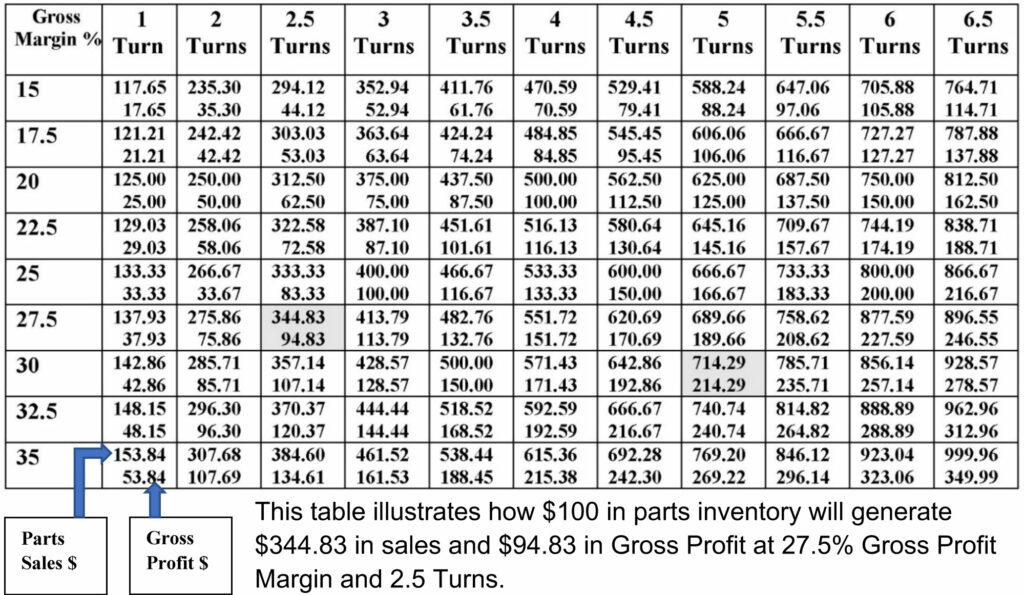The wise and skillful Parts Manager learns how to satisfy, simultaneously, the conflicting interests of his two primary constituents: dealer ownership and dealer customers.
Customers demand high off-shelf fill rates which tend to increase inventory investment. Dealer Ownership demands high asset productivity. The challenge is to do both extremely well.
The figure below illustrates how a $100.00 inventory investment is impacted by relatively small changes in parts gross profit margin with small changes in inventory turns. Improvements in asset productivity can be achieved through two steps:
- Careful attention to optimizing inventory turns by diligently controlling inventory stock levels and preventing excessive obsolescence and excess stock.
- Pricing optimization through the elimination of unnecessary discounts. Parts purchasing and replenishment strategy should focus on obtaining quality products at the least cost including inbound freight discounts.
Impact on $100.00 Parts Investment at Various Gross Profit Margins and Inventory Turns

A dealer with $700,000.00 average inventory and selling at 27.5% Gross Profit Margin and 2.5 turns over the past year generates $481,250 in Gross Profit. If this same dealer improves parts performance from 27.5% Gross Profit Margin to 30% and increases turns from 2.5 to 5 the next year, he will generate $1,050,000.00 in Gross Profit, a $568,750.00 incremental increase from last year.

